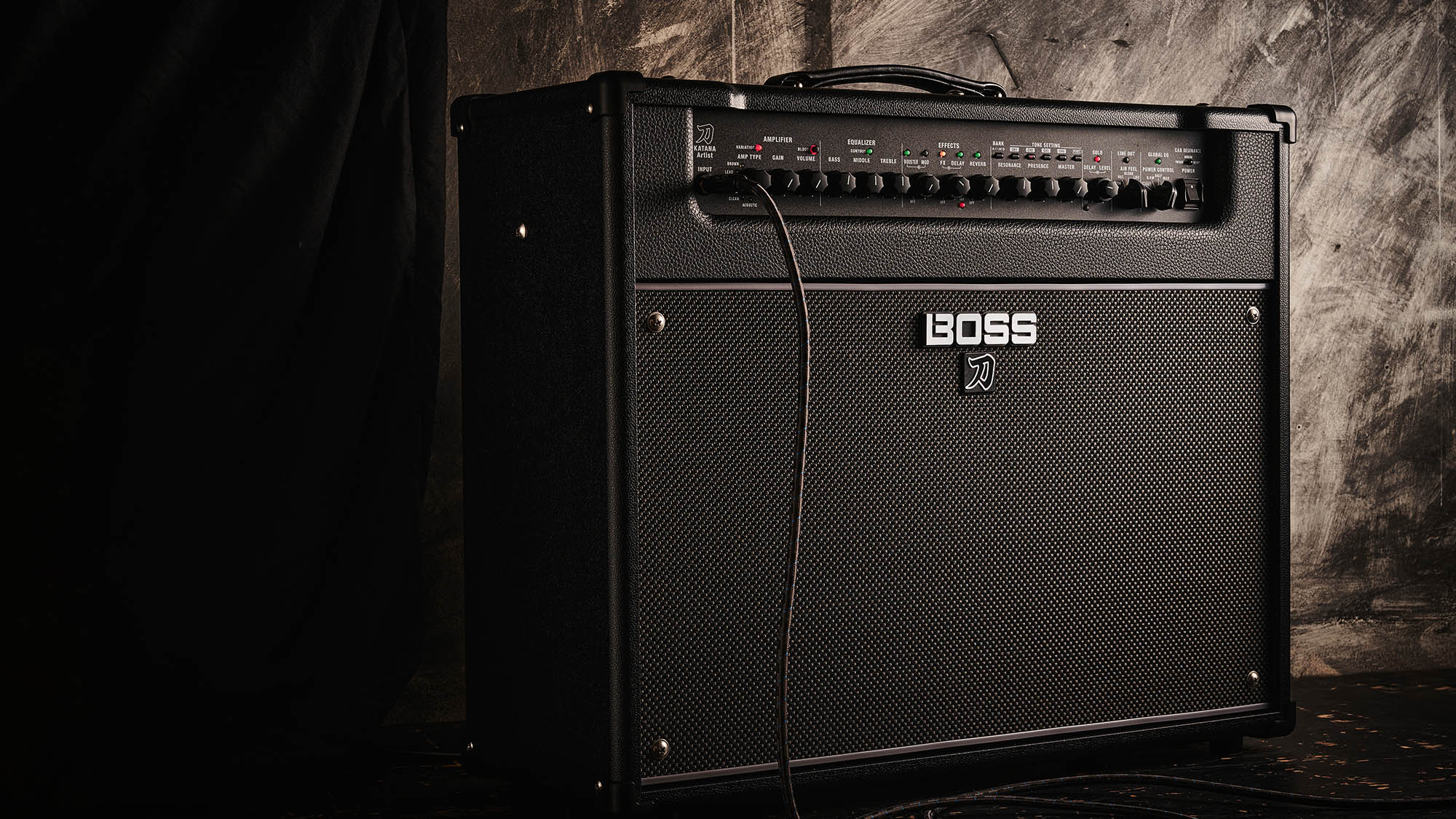Guitar World Verdict
Lots of thought has gone into this: you could plug the Katana in and record via USB in your bedroom or take it on any stage and you’ll have the appropriate connections for the job. Like any piece of premium gear, there’s a learning curve involved, but getting through that and turning this up in a room is a rewarding experience.
Pros
- +
Portable size.
- +
Ability to produce virtually any sound.
- +
Fully featured, including a Stereo Expand mode to use two together – if you can afford it!
Cons
- -
Some technical know-how is needed to get the best results. You’ll need to budget for a footswitch on top for gigging.
You can trust Guitar World
As a sibling to the famed Roland Corporation, Boss began its own ascent in the mid-1970s with the CE-1 Chorus Ensemble pedal – an effect that, until then, had only been available in Roland’s Jazz Chorus amps.
Very quickly, the Boss CE-1 found its way onto the pedalboards of Andy Summers and Alex Lifeson, among many others. By 1980, the much-loved (and still current) compact effects series was following in its footsteps.
Over the years Boss has also expanded into different areas – with multi‑effects/modellers and, of course, guitar amplifiers – with great success. The Katana series has been around since 2016 and represents an all-in-one solution for players who need a roadworthy, affordable rig with all the effects and connectivity you could ask for.
Launched earlier in this year, this Gen 3 version of the Artist combo amp boasts improved overall sound, afforded by the latest technological developments, plus new features in the shape of a Pushed amp type and Bloom mode.
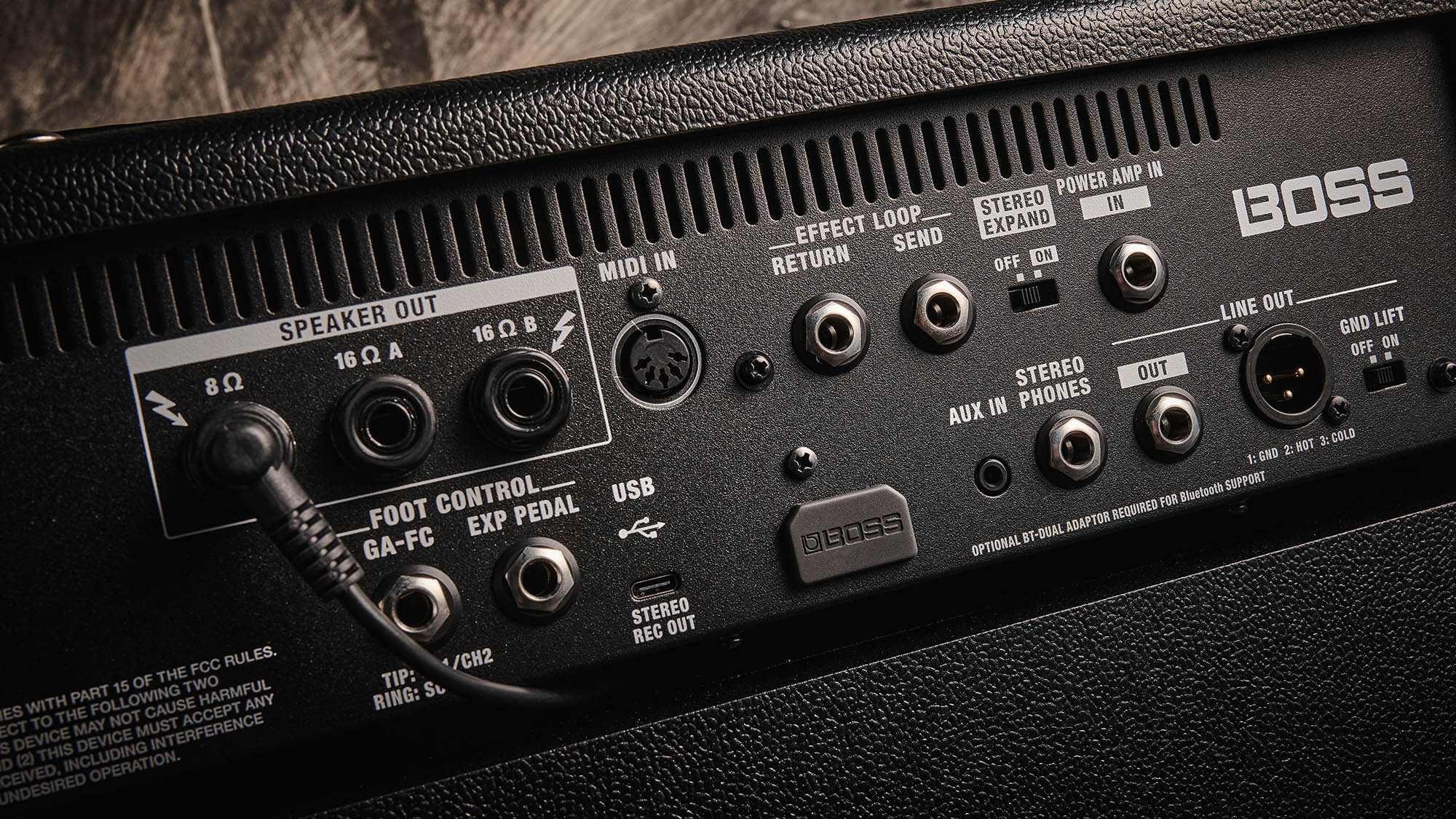
On the front panel we have sections for Amp Type, Equalizer, Effects, Tone Setting/Master section, Solo, Line Out, Power Control, Global EQ and Cab Resonance. Each section has its own control knobs like a conventional amp, plus a number of small backlit buttons above, offering various extra options.
Boss has taken care to give us the ‘hands-on’ feel and instant control of analogue amp knobs, but it’s important to realise that beyond this is a whole lot more potential for deep editing/sound customisation
Boss has taken care to give us the ‘hands-on’ feel and instant control of analogue amp knobs, but it’s important to realise that beyond this is a whole lot more potential for deep editing/sound customisation, normally inaccessible outside a DAW. However, the Katana does come factory loaded with some very useful example presets to get you started.
The Amplifier knob offers six modes: Acoustic, Clean, Pushed, Crunch, Lead and Brown (think Van Halen). A Variation button directly above the dial offers exactly what it suggests; when pressed, it lights up red, giving you a slightly brighter/tighter version of the same sound, a bit like the Bright input on an amp. There are also Gain and Volume knobs, plus a button for the new Bloom mode – more on this later.
Feel & Sounds
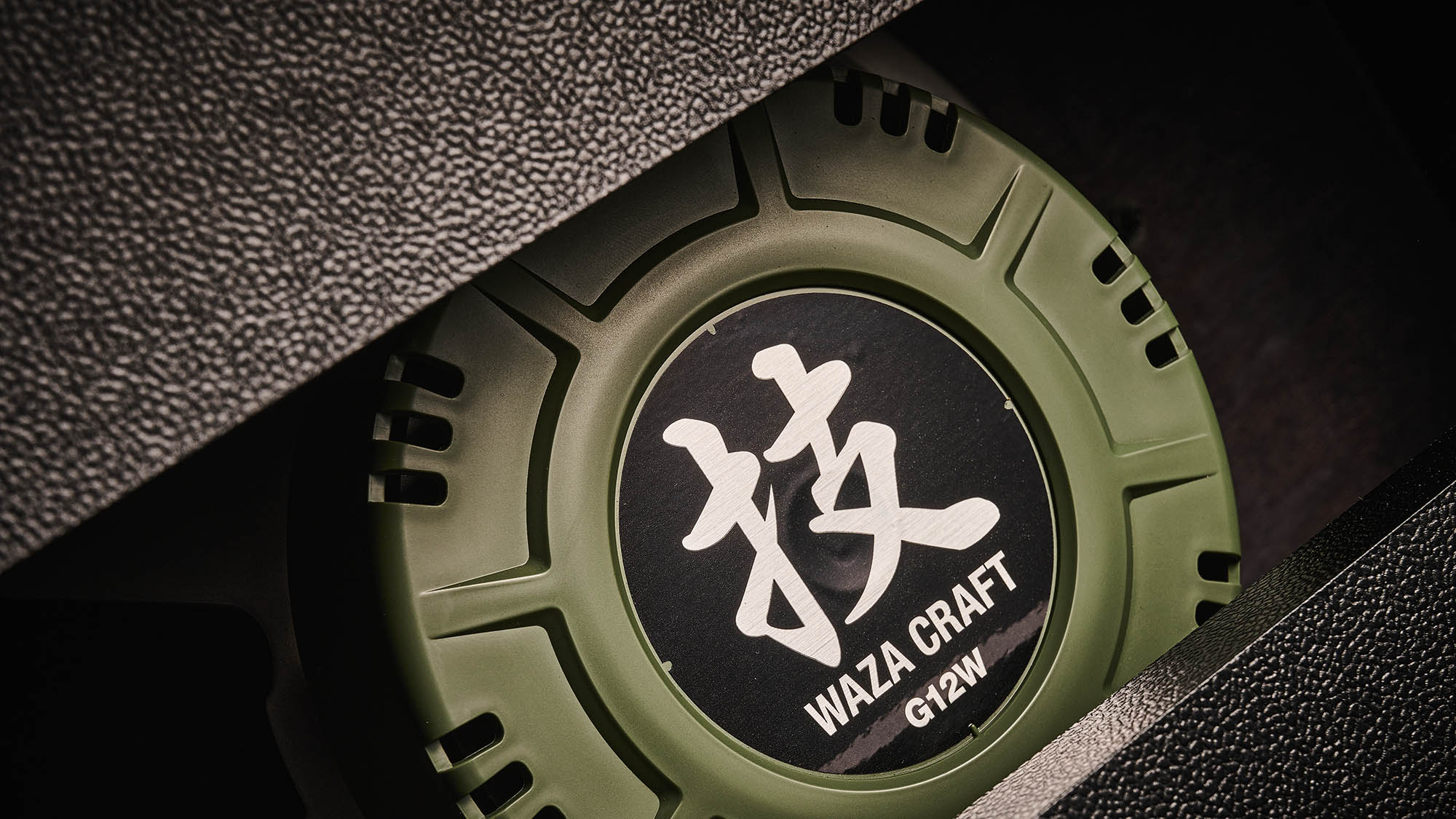
The amp gives an impressive range of sounds, from those optimised for acoustic guitar/piezo pickups right through crystal clean to crunch, drive and then on to the highest gain lead tones.
We were pleasantly surprised at the chewy, touch-sensitive break-up of the new Pushed mode – solid‑state amps didn’t sound anything like this when we were starting out! Tones such as this show the Tube Logic technology is doing an impressive job – and is no mere marketing slogan.
Humbuckers can go from light break-up to early Zeppelin-style gain (think Heartbreaker), with single-coils inviting a more SRV/John Mayer approach. Selecting the new Bloom mode revoices the Class A/B power amp to give a more vintage/spongy low-end that complements single-coils particularly well.

Moving right, we find the Equalizer section, featuring Bass, Middle and Treble knobs, with a small three-mode Contour switch above. Press this to cycle through three additional global midrange voicings for which the button lights up in green, red or orange modes.
Vintage, scooped and aggressive and more Vox-like flavours are all available here – not forgetting the off/neutral position, which offers an extremely usable option, too.
The effects section makes clever use of concentric knobs and more backlit buttons, offering various flavours from the Boss back catalogue (for example, Blues Driver, Chorus, Delay, EQ and so on). Like the Contour button, these light up in green, red or orange to indicate what you have selected. Plus, there’s a tap tempo button for quick and easy delay time setting.
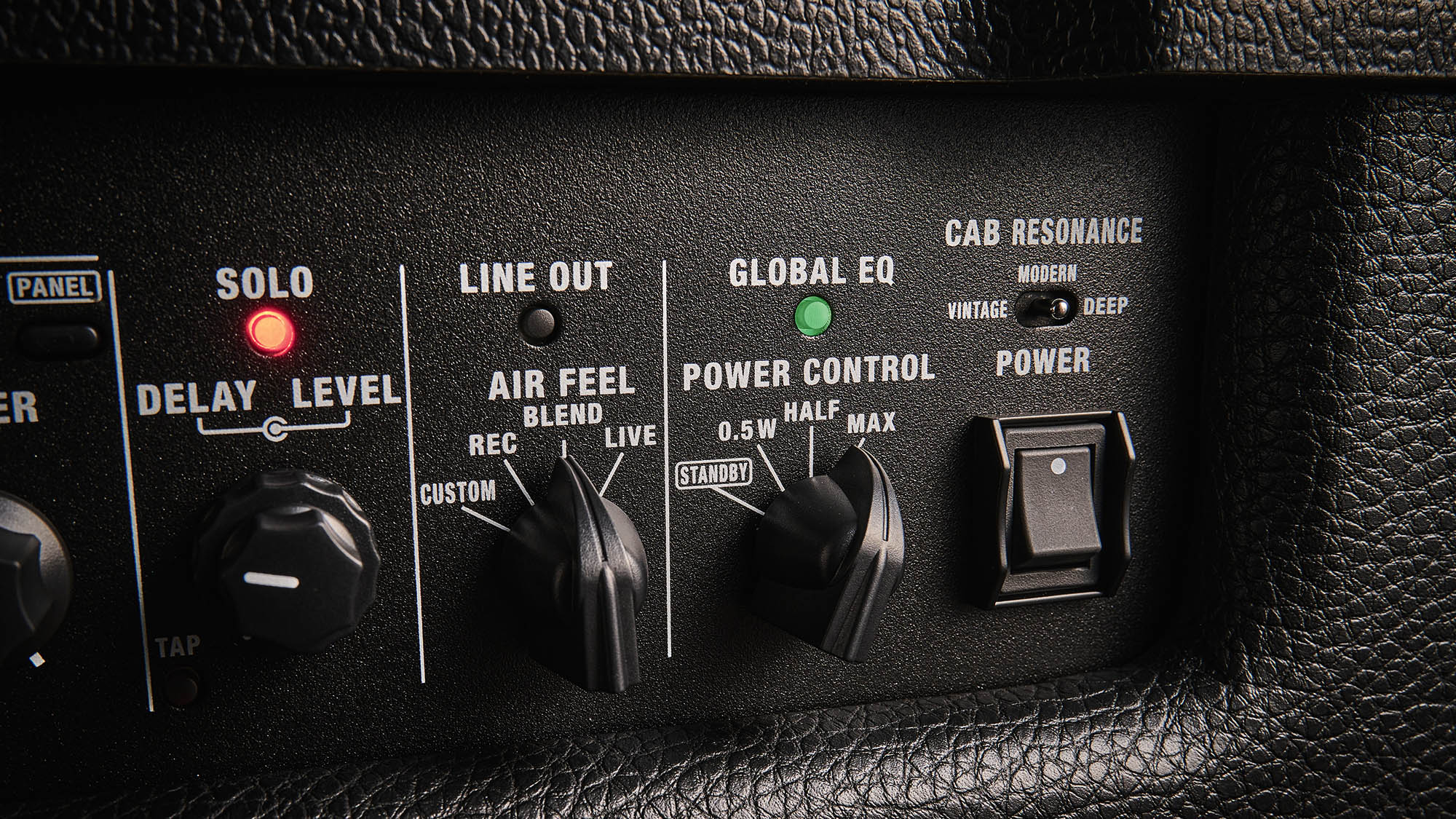
As we said earlier, the Katana comes pre-loaded with some useful options, but for ultimate control – including the virtual pedal order and settings – you’ll need to connect to your computer via USB to the Boss Tone Studio app (much as you would with a Line 6 Helix or Kemper and their software) or use the optional Bluetooth dongle with the Boss app on a mobile device.
The Reverb features three modes via another similar switch, with a range of quality spring/hall/plate types to choose from. Again, you can deep-edit all of these, but the factory settings are extremely usable.
Next, we find global controls for Resonance, Presence and Master Volume, plus a range of switches to navigate the four presents in Bank A or B – eight presets in total. Obviously, reaching round to switch these on a gig wouldn’t be practical, so you’d want something such as the optional GA-FC EX foot controller, which allows for channel/preset/effect switching on the fly. There’s also a MIDI input.
The Solo section has a single concentric knob, offering Master Volume and Delay Level, plus a Tap Tempo button for the delay time – yes, another dedicated delay. You can set up a master volume boost for solos and add in some delay on any preset this way – useful if you don’t play a show strictly with presets and want to take a spontaneous solo.
To the far right of the control panel, you’ll find a rotary control offering various speaker emulated Line Out options: virtual close/distant mic, or a combination of both.
The Power Control offers Standby/Mute, 0.5 watts, Half and Full Power modes and, finally, there’s a selector for Cab Resonance offering Vintage, Modern or Deep modes, and a Global EQ switch for three extra overall voicings. Virtually all of these functions can be customised via the app, but we’d suggest getting acquainted with the factory presets first.
On the back panel we find various extension speaker options and an effects loop, plus power amp in, balanced and standard jack line outs, aux in for external sounds/backing tracks and connections for MIDI, footswitches and an expression pedal. There’s also the socket for the optional BT Dual Bluetooth module and USB connection. We can’t imagine what else anyone might need!
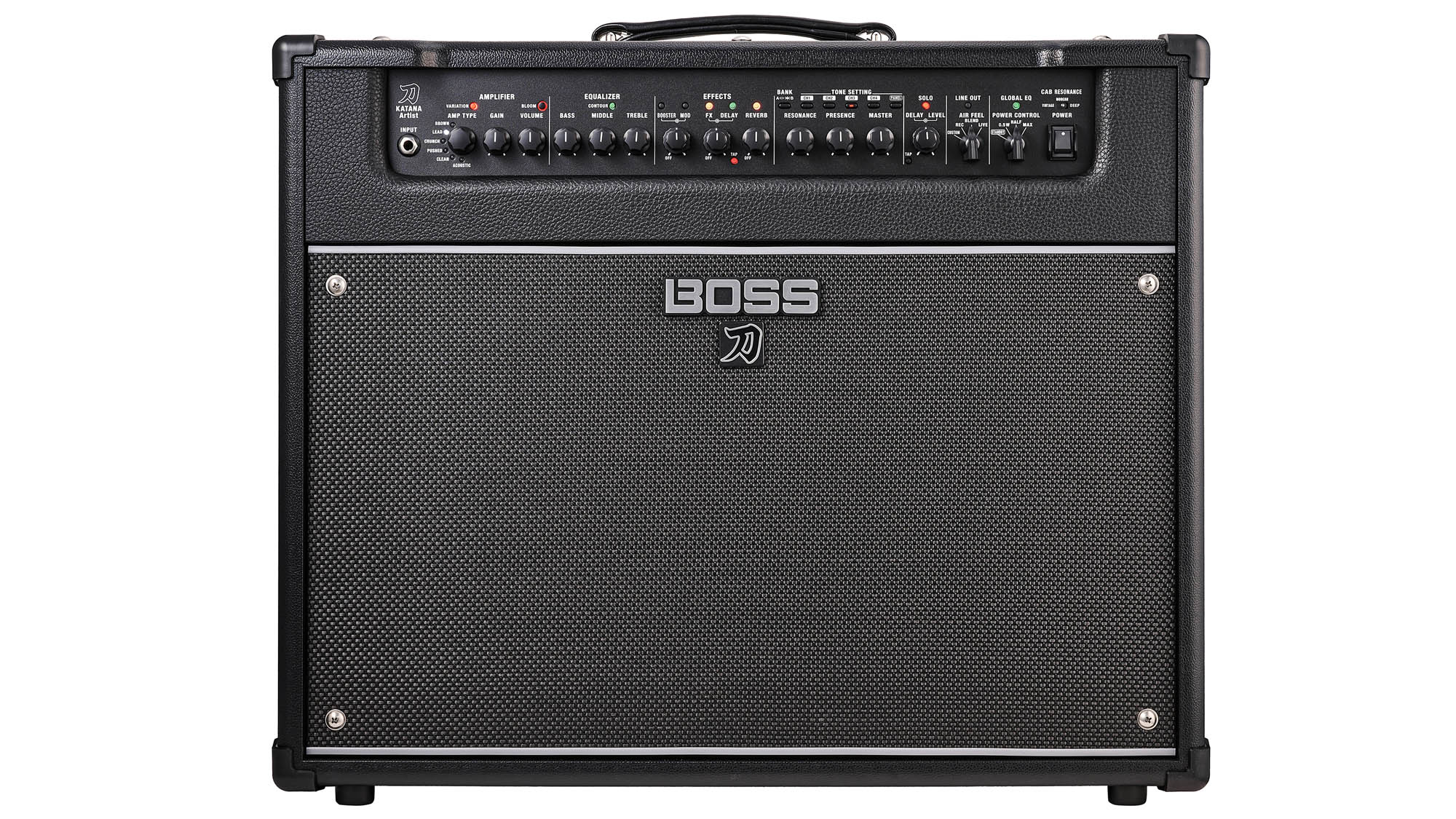
Verdict
Lots of thought has gone into this: you could plug the Katana in and record via USB in your bedroom or take it on any stage and you’ll have the appropriate connections for the job. Like any piece of premium gear, there’s a learning curve involved, but getting through that and turning this up in a room is a rewarding experience.
The custom-designed 12-inch Waza speaker in the slightly oversized cab packs a real punch with plenty of headroom and low-end thump
The custom-designed 12-inch Waza speaker in the slightly oversized cab packs a real punch with plenty of headroom and low-end thump. The semi-open-back cab design gives a wide, even spread of sound, which should give a good account of itself at smaller gigs, but it’s also no fuss to connect it to a PA via standard jack or balanced line out for further sound reinforcement.
The control panel has been cleverly designed to allow access to any function you’d need, once you’ve dealt with all the deep-editing stuff – even that can be accessed via Bluetooth if needed. You’ll need to shell out for the optional footswitch or a MIDI controller to get the very best results, but you’d still be coming in at appreciably less than a grand. Food for serious thought.
Specs
- PRICE: $599/£689
- ORIGIN: Malaysia
- TYPE: 1x12 solid-state combo
- OUTPUT: 100W
- DIMENSIONS: 630 (w) x 248 (d) x 515mm (h)
- WEIGHT (kg/lb): 19/41.8
- LOUDSPEAKER: Custom 12” Waza speaker
- CHANNELS: 8 presets (2x banks of 4)
- CONTROLS: Amp Type, Gain, Volume, Bass, Middle, Treble, Effects (Mod/Boost, FX/Delay, Reverb) Resonance, Presence, Master, Solo (with Delay/Level controls), Line Out, Power Control, Global EQ and Cab Resonance
- FOOTSWITCH: GA-FC EX (£120, not supplied)
- ADDITIONAL FEATURES: Speaker emulated Line Out with customisable modes
- OPTIONS: BT Dual Bluetooth module for wireless deep editing (£44.99)
- RANGE OPTIONS: Other Gen 3 options: 50 112 combo (£275), 50 EX 112 combo (£359), 100 112 combo (£419), 100/212 combo (£529), Head (£429) and Artist Head (£599)
- CONTACT: Boss
As well as a longtime contributor to Guitarist and Guitar Techniques, Richard is Tony Hadley’s longstanding guitarist, and has worked with everyone from Roger Daltrey to Ronan Keating.
“The name holds a clue – this pedal is ideal for blues players”: J Rockett Blue Note Select review
“I always felt like that record could have been better if we had worked on it some more”: Looking for a blockbuster comeback album, Aerosmith turned to Van Halen producer Ted Templeman. For Joe Perry, it served as a learning experience
“If you’ve ever wondered what unobtanium looks like in amp form, this is it”: Played and revered by Stevie Ray Vaughan, Carlos Santana, and John Mayer, Dumble amps have an almost mythical reputation. But what's all the fuss really about?
